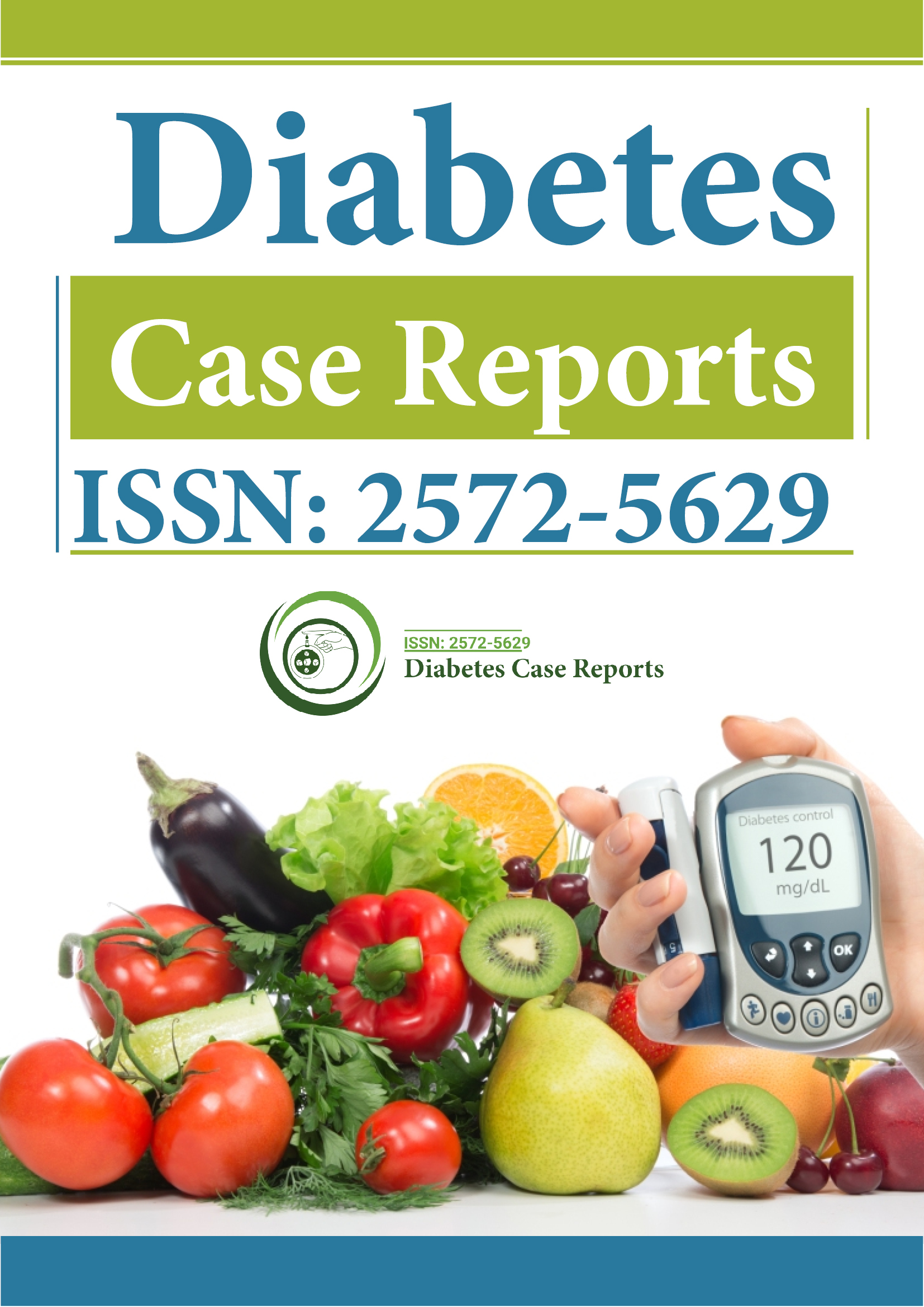Indexed In
- RefSeek
- Hamdard University
- EBSCO A-Z
- Euro Pub
- Google Scholar
Useful Links
Share This Page
Journal Flyer

Open Access Journals
- Agri and Aquaculture
- Biochemistry
- Bioinformatics & Systems Biology
- Business & Management
- Chemistry
- Clinical Sciences
- Engineering
- Food & Nutrition
- General Science
- Genetics & Molecular Biology
- Immunology & Microbiology
- Medical Sciences
- Neuroscience & Psychology
- Nursing & Health Care
- Pharmaceutical Sciences
Perspective - (2022) Volume 7, Issue 5
A1C Tests in Blood Glucose and Different Screening Techniques in Diabetes
Parkin Robinson*Received: 19-Aug-2022, Manuscript No. DCRS-22-18226; Editor assigned: 23-Aug-2022, Pre QC No. DCRS-22-18226 (PQ); Reviewed: 12-Sep-2022, QC No. DCRS-22-18226; Revised: 20-Sep-2022, Manuscript No. DCRS-22-18226 (R); Published: 28-Sep-2022, DOI: 10.35841/2572-5629.22.7.130
Description
The A1C test is a blood test that provides details about the blood glucose, often known as blood sugar, average levels over the previous three months. Type 2 diabetes and prediabetes can be identified with the A1C test. The A1C test is the main test used to manage diabetes. The haemoglobin A1C, HbA1c, glycated haemoglobin, or glycohemoglobin test are other names for the A1C test. The component of a red blood cell called haemoglobin which transports oxygen to the cells. The blood cells contain haemoglobin, which glucose binds to or attaches to. The A1C test is based on this glucose-hemoglobin attachment. The amount of glucose that binds to haemoglobin increases as blood glucose levels rise. The A1C test calculates the average blood glucose levels over the previous three months by measuring the amount of haemoglobin with linked glucose. It worse bloods sugar control and a higher chance of developing diabetic complications when A1C test result rises.
An A1C test can be used to check for or to diagnose:
• In Diabetes type 2 the body doesn't produce enough insulin to transport blood sugar from the bloodstream into the cells or because cells can stop reacting to insulin, Type 2 diabetes causes blood glucose too high
• The pre-diabetes refers to blood glucose levels that are elevated but not high enough to be classified as diabetes. Healthy nutrition and exercise are two lifestyle modifications that may help postpone or stop the progression of prediabetes to Type 2 diabetes
Setting goals for A1C level
For diabetics, a target A1C level is typically less than 7%. The chance of developing diabetes-related problems increases with increasing haemoglobin A1C levels. A level above 8% may be present in someone with long-term untreated diabetes.
Oral Glucose Tolerance Test (OGTT)
Compared to the other two glucose tests for diabetes, the Oral Glucose Tolerance Test (OGTT) takes a little longer. The blood is drawn for this test after an overnight fast and again two hours after consuming a sugary beverage. After drinking, it's typical for blood sugar levels to increase. But within two hours, normal blood sugar drops to below 140 mg/dL.
Fasting Plasma Glucose test (FPG)
The Fasting Plasma Glucose (FPG) test is a blood test that’s performed after fasting overnight. It measures the sugar in the blood. A fasting glucose test result that is normal is less than 100 mg/dL. For the diagnosis of prediabetes, a value between 100 mg/dL to 125 mg/dL is required. One with 126 mg/dL or above is indicative of diabetes.
Precautions during increased stage
Small lifestyle adjustments can have a major impact and possibly put type 2 diabetes in remission if the patient having it in the early stages. Starting a fitness regimen can be beneficial. As soon as type 1 diabetes is identified, it requires insulin therapy. Higher A1C readings may indicate that it need to start taking medication. Diabetes can develop from prediabetes. The patient also needs to adjust the lifestyle in other ways and keep a closer eye on daily blood glucose levels. The optimal course of treatment should be discussed with doctor.
Conclusion
The A1C test calculates the amount of haemoglobin and glucose in the blood. It gives a picture of the typical blood sugar levels over the last three months and is an important tool for detecting type 2 diabetes and managing diabetes. The A1C test is used by doctors to screen people over age 45 for diabetes and prediabetes. If a person is overweight or has other risk factors, they might also screen younger people. A1C tests are typically performed on diabetics multiple times a year.
Citation: Robinson P (2022) A1C Tests in Blood Glucose and Different Screening Techniques in Diabetes. Diabetes Case Rep. 7:130.
Copyright: © 2022 Robinson P. This is an open-access article distributed under the terms of the Creative Commons Attribution License, which permits unrestricted use, distribution, and reproduction in any medium, provided the original author and source are credited.
